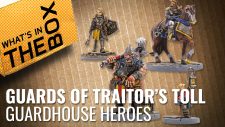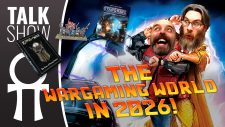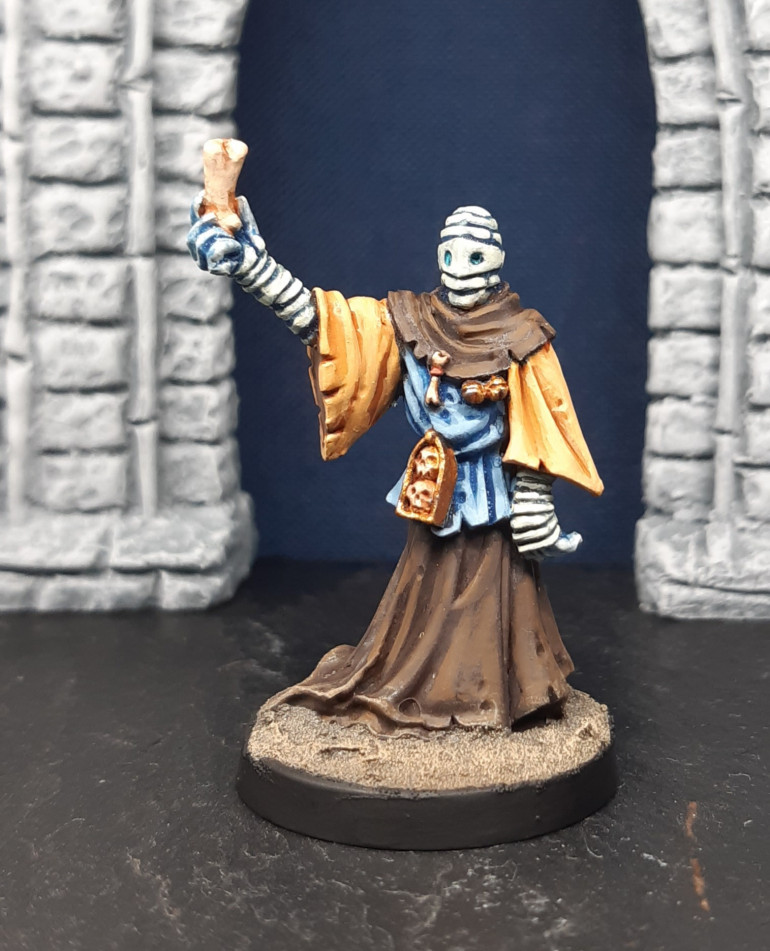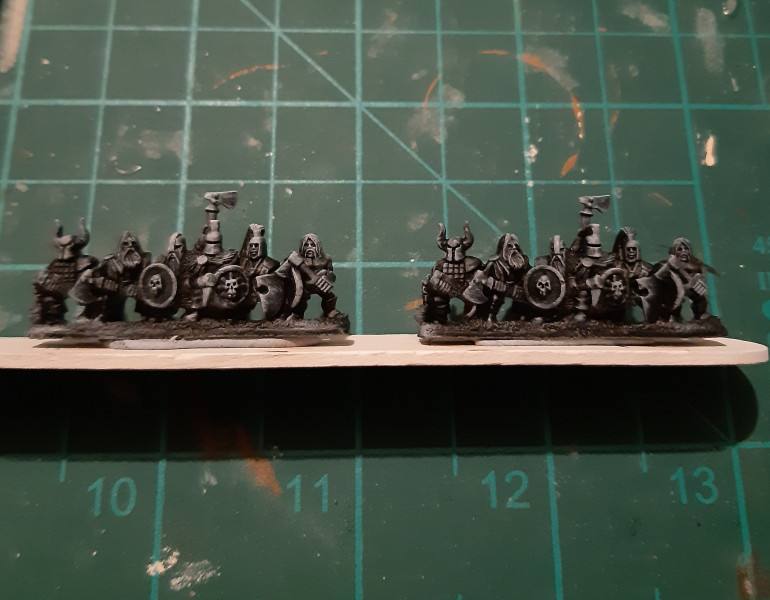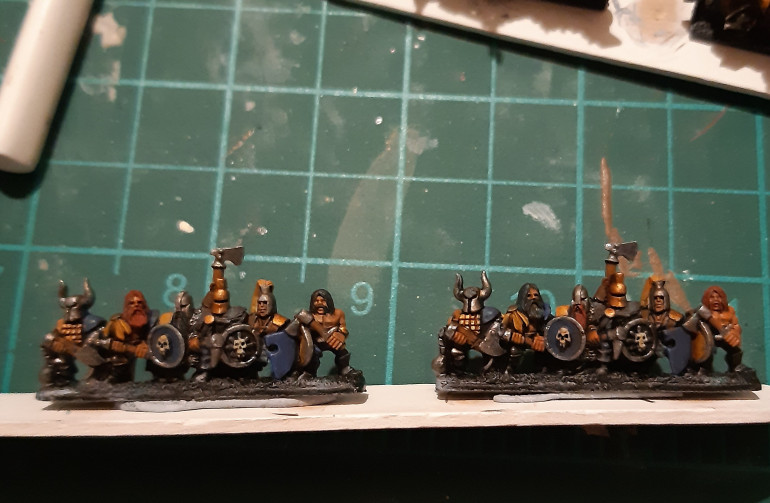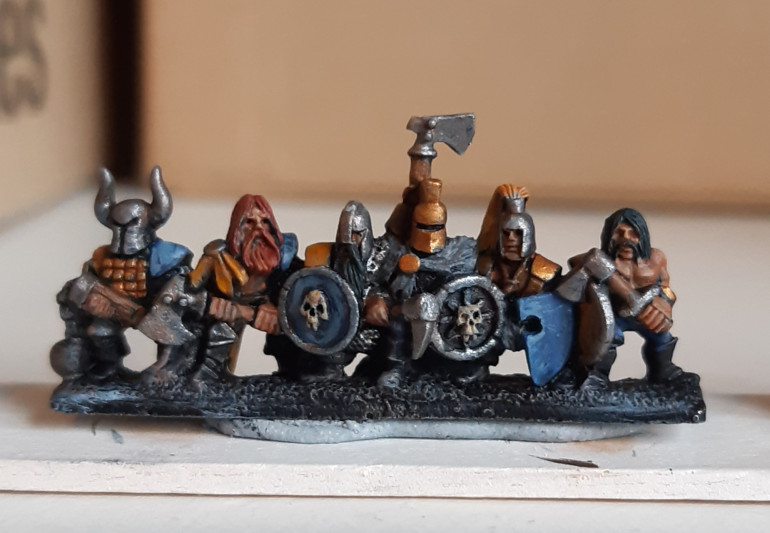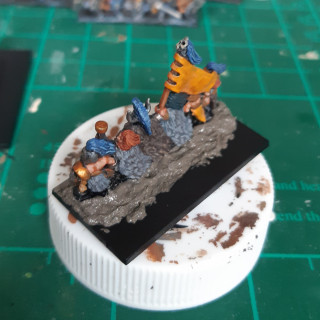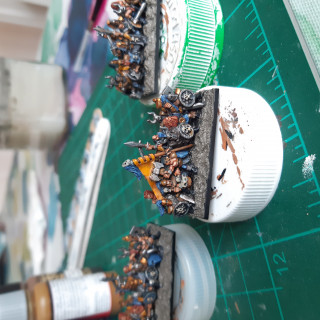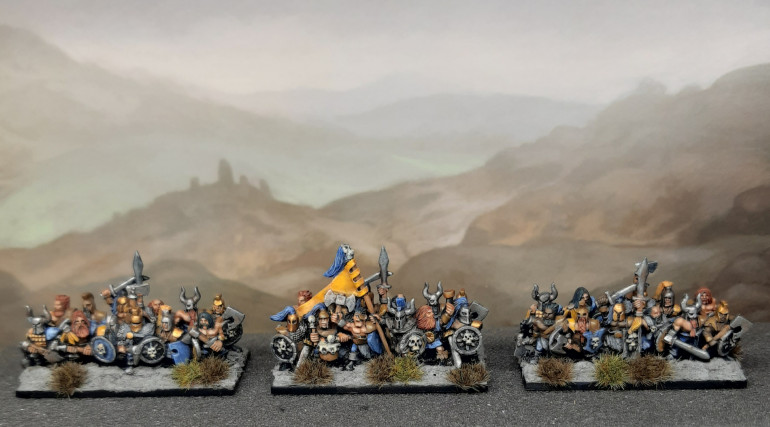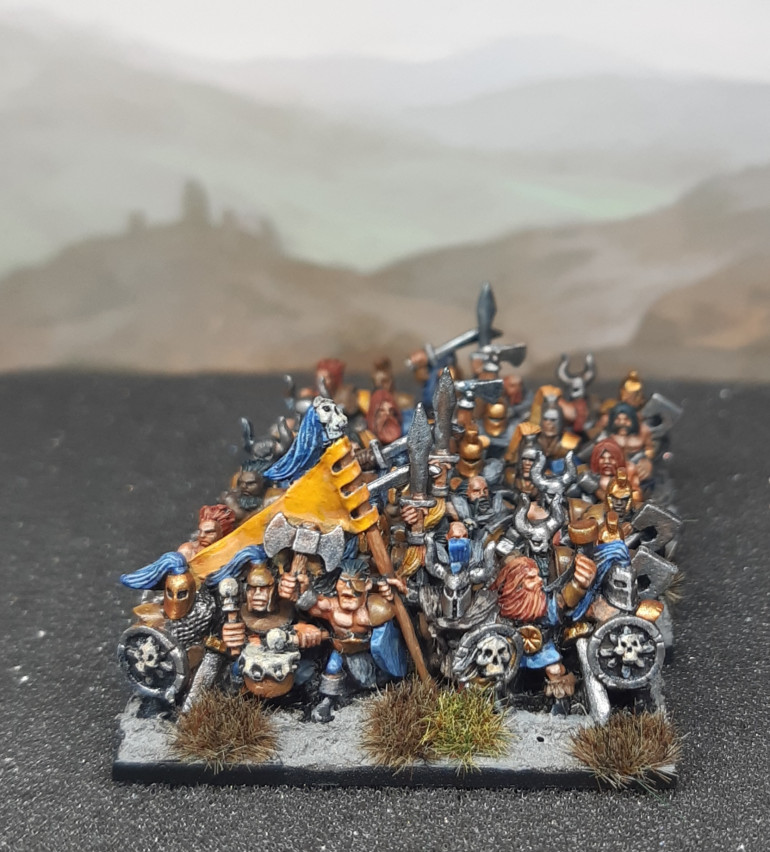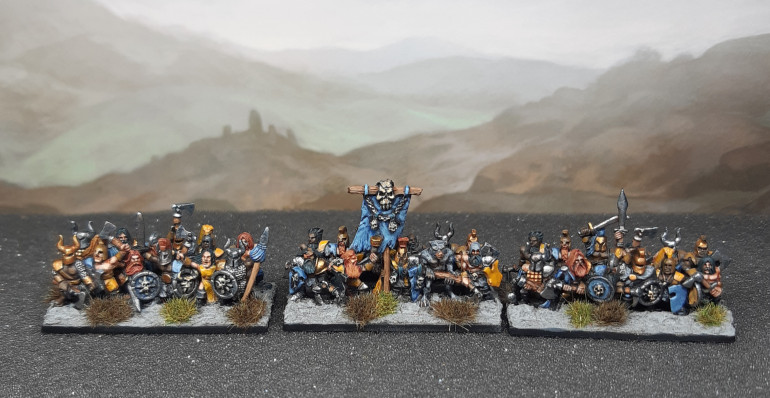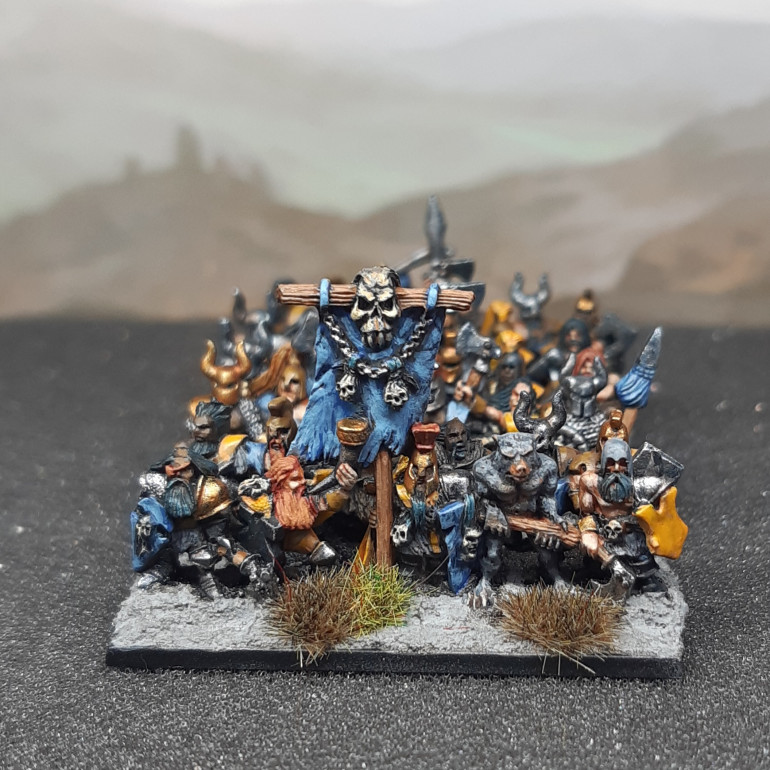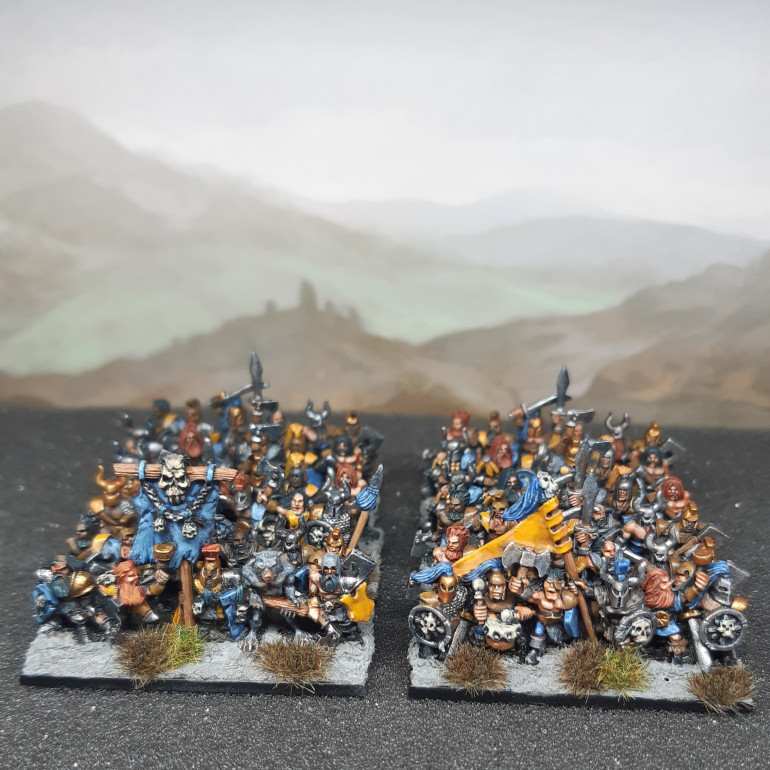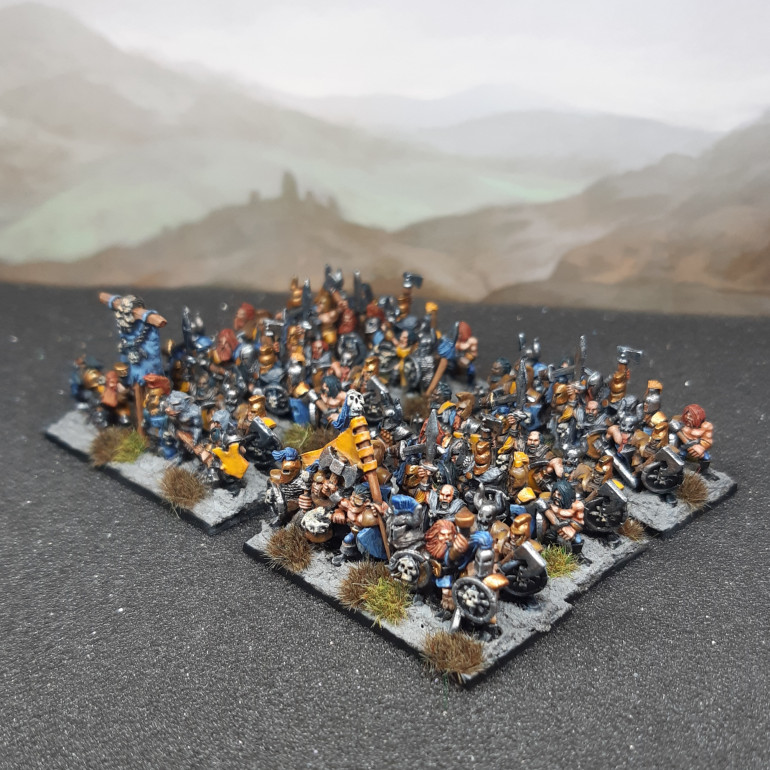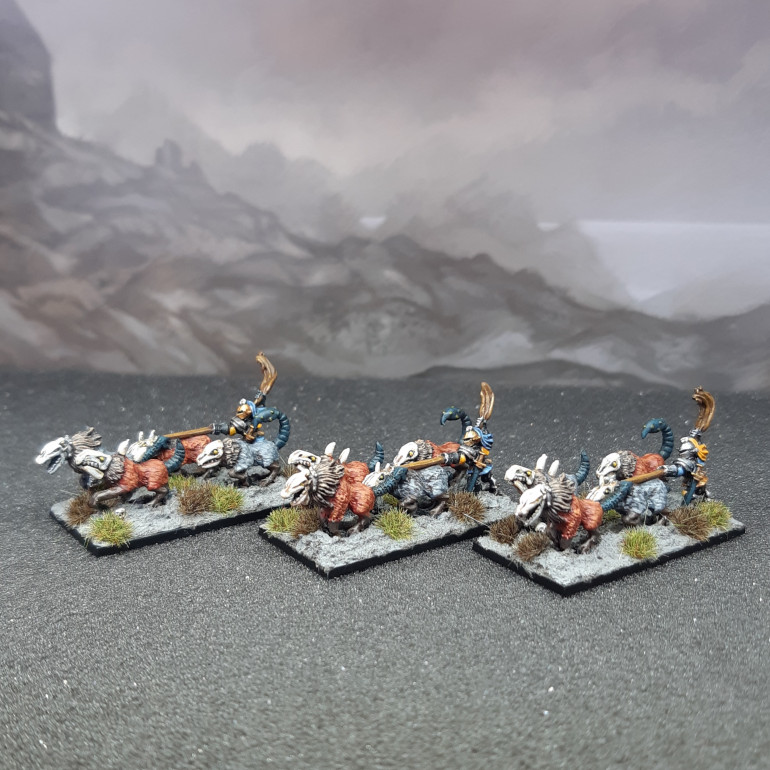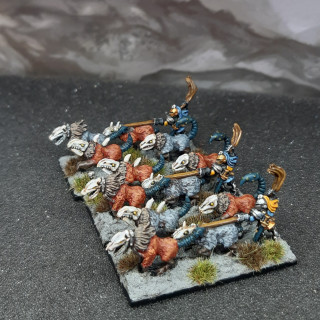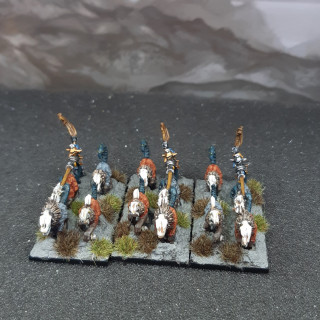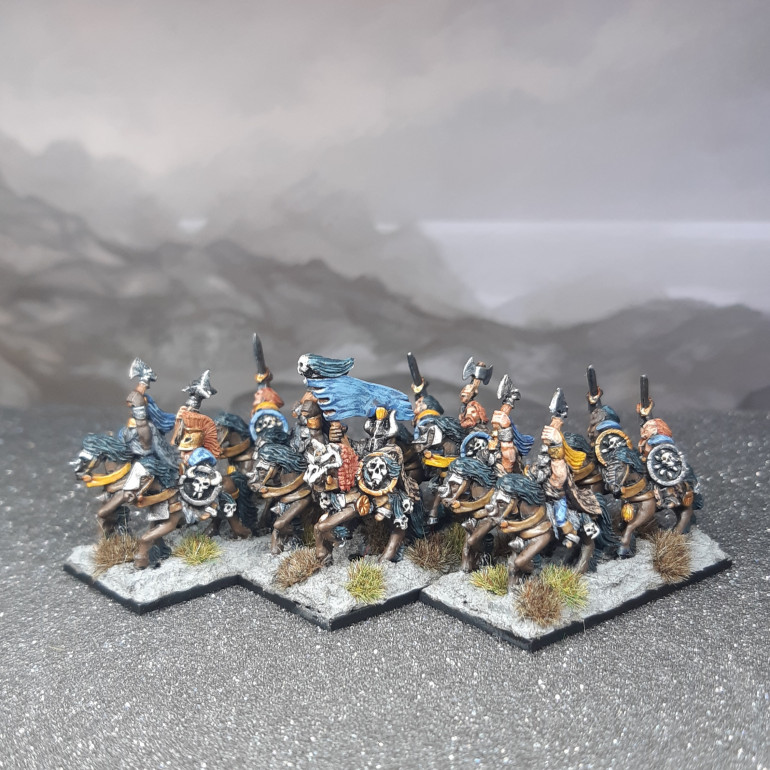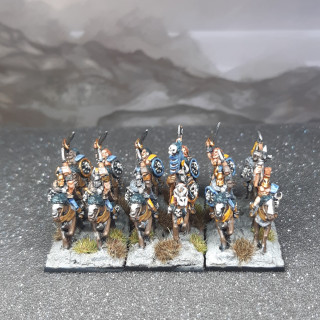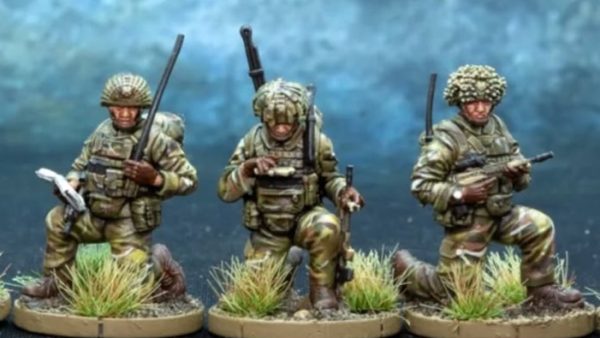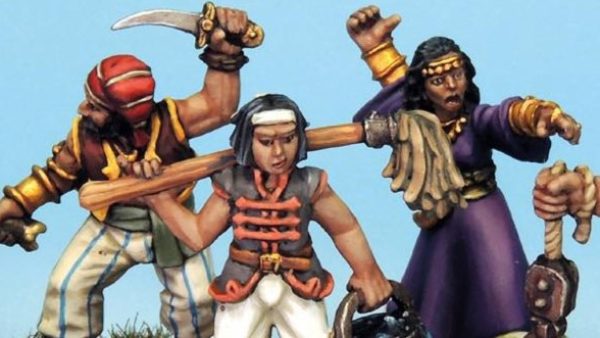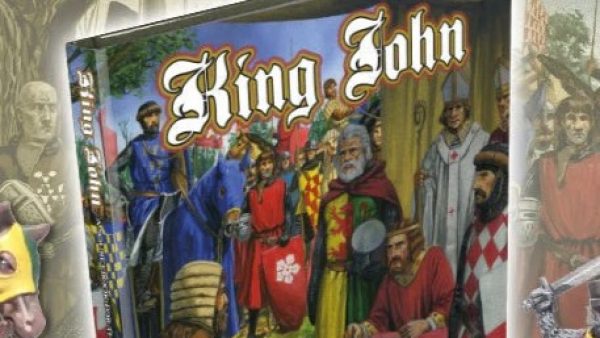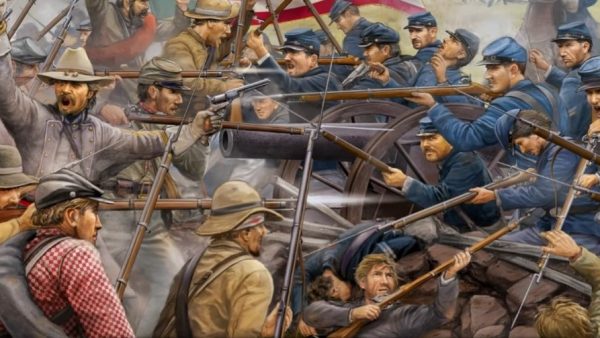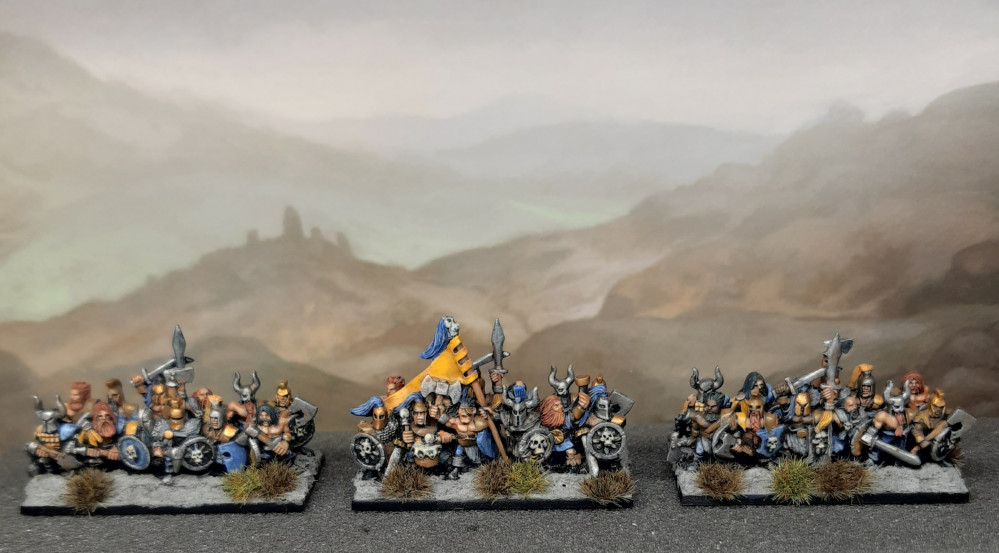
Revisiting Warmaster – Spring Clean 2024
Recommendations: 307
About the Project
Revisiting building a Chaos army for Warmaster, an idea that never really got going 20-odd years ago. A second chance for second hand miniatures.
Related Game: Warmaster
Related Company: Games Workshop
Related Genre: Fantasy
Related Contest: Spring Clean Hobby Challenge 2024
This Project is Completed
The End of the Beginning
Like quite a few people, my hobby journey is a tale of two halves. Imagination captured as a youngster, but drifting away from the hobby around the time I headed off to university, before rediscovering the joy in collecting, painting and gaming quite a few years later.
Warmaster was pretty much the last game that captured my attention before I stopped my first hobby era. The smaller scale figures and design of the game was really interesting at the time, but came a bit too late as I was already losing general interest in the hobby. The army that appealled the most was Chaos, and I got as far as buying a few packs and painting up one unit of Knights. That unit was pretty much the last thing I painted before resuming the hobby 20-odd years later – it marked the end of the beginning of my hobby journey.
Fast forward to about a month ago, OTT community member Nogbadthebad posted up some packs of Warmaster Chaos units for sale on Discord. I noted the post, thought nothing about it, but a seed had been sown. That seed grew over a couple of days – this was a chance to revisit the last abandoned project of my younger self. Nog’s post was responded to, and I had a Spring Clean Challenge ready to go.
This project is all second hand original Warmaster figures, all being given a second chance. I’ve got ten units to paint, including my original Chaos knights. I hope I can work through them at a rate of about a unit a week, so it shouldn’t be too much of a challenge to wrap this project up within the Spring Clean window.
Here’s a list of the units that I’ll be working through over years next few weeks:
-
2x Marauders
-
2x Chaos Warriors
-
2x Chaos Knights (1 unit to be stripped and re-painted)
-
Chaos Hounds
-
Harpies
-
Chariots
-
Marauder Horsemen
-
Character set
Selecting Colour Schemes
The starting place for any new project is working out a broad colour scheme. Historical projects are nice as the heavy lifting has already been done, but the choice of, well, anything you want for fantasy and sci-fi projects can be a bit of a stumbling block for me.
I knew I didn’t want to use the black/red/brass colours I went with for my knights back in the day. I had a look through a lot of different things to get some inspiration, and settled on a blue/yellow/brown scheme I previously used on some cultist figures by Meridian Miniatures. This scheme would hopefully give some nice bright colours that help make smaller scale models pop, whilst still retaining a bit of the grim dark feel of the Warhammer setting.
Painting a Test Unit
Having an idea of a colour scheme is one thing, but it needs to be tested on a few figures to see if it really works. I grabbed one of the Marauder units to trial my paint scheme. I didn’t want to go too overboard with these 10mm models. A basecoat, maybe a wash and then a single highlight was the aim.
First, the strips were primed black (using Colour Forge matt black spray), and then lightly drybrushed with a white paint to help pick out the details.
Next, basecoats. Paint brands are going to be shortened as follows: CT – Citadel; VMC – Vallejo Model Colour; VGC – Vallejo Games Colour.
- Skin – CT Ratskin Flesh or VMC Burnt Umber
- Blue fabric/armour – CT Altdorf Guard Blue
- Yellow fabric/armour – VGC Bronze Fleshtone
- Grey furs/fabric – VMC London Grey
- Leather – VMC Flat Earth
- Wood – VGC Beasty Brown
- Brass – CT Retributor Armour
- Steel – VMC Oily Steel
- Red hair – VMC Cavalry Brown
- Black hair – VMC Dark Sea Blue
- Brown furs – VMC German Camo Black Brown
- Bone – VMC Buff
A few things (like boots) were just left the primed black colour. The blue and yellow colours were spread around across the strips, using different skin tones and hair colour to add a bit of variation.
Next a wash all over the strip using CT Reiksland Fleshshade. This helped to reinforce the darkness of the recesses, and add some grimy depth to the metallics and shade the colours a little.
Finally, a single highlight was added:
- Skin – CT Kislev Flesh or Kislev Flesh mixed 1:1 with VMC Burnt Umber
- Blue fabric/armour – VMC Pastel Blue
- Yellow fabric/armour – VGC Sun Yellow
- Grey furs/fabric – VMC Medium Sea Grey
- Leather – VGC Leather Brown
- Wood – VMC Light Brown
- Red hair – VMC Orange Brown
- Brown furs – VMC Brown Sand
- Bone – VGC Dead White
Metallic areas and black hair were left as is, with no highlight applied. For the furs, the highlight colour was stippled over the surface.
Basing
I struggle I little with basing models. I’m fully aware that the base can make a huge difference on the end result for any model, but once I’ve painted a figure, I find it a bit of a chore. Therefore I tend to be a bit lazy and look for fast and simple ways to base my figures. Applying a texture paste and giving the base a quick drybrush before adding a few tufts is about as complex as I like to go.
Big issue with that approach for Warmaster minis is any careless drybrushing will really be noticeable, and there’s no realistic way to get between the two strips on each base. I therefore thought about using a wash over a texture paste instead, and made a couple of test bases to try out different combinations of base colour and wash.
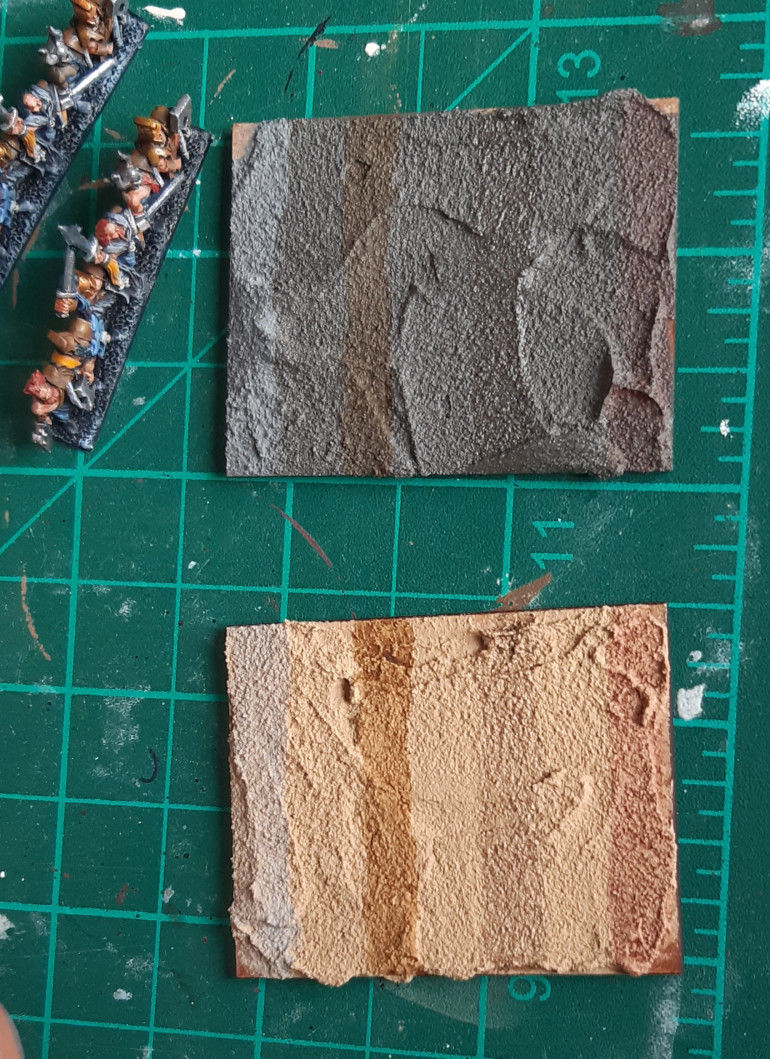 My test bases. The two texture pastes were Vallejo Dark Earth and AK Desert Sand. A band of four washes was applied to both - Vallejo Grey, Flesh, Umber and Sepia washes.
My test bases. The two texture pastes were Vallejo Dark Earth and AK Desert Sand. A band of four washes was applied to both - Vallejo Grey, Flesh, Umber and Sepia washes.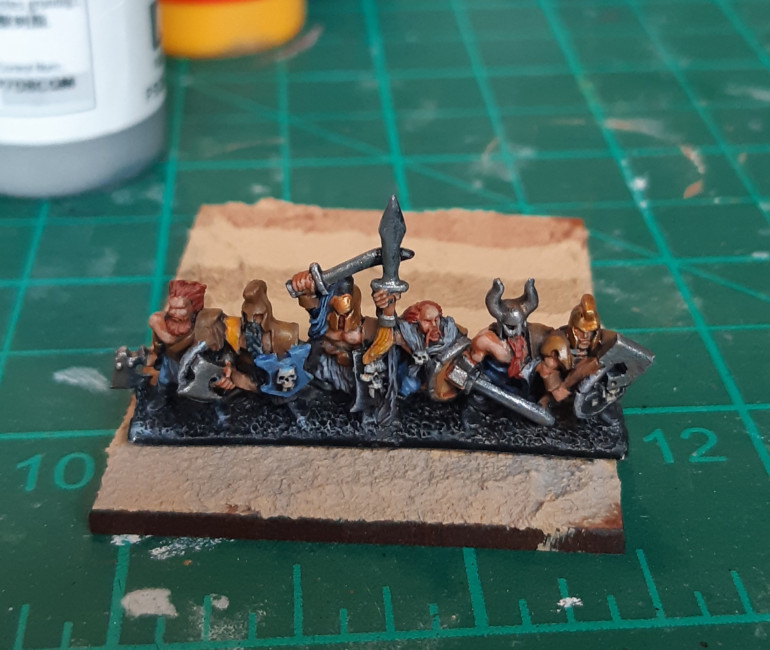 I then put a strip in front of each section to decide what felt/looked best. I decided on the Vallejo Dark Earth with the Grey wash, as it felt like an appropriate cold/wasteland cover, and gave some nice contrast to the colour scheme
I then put a strip in front of each section to decide what felt/looked best. I decided on the Vallejo Dark Earth with the Grey wash, as it felt like an appropriate cold/wasteland cover, and gave some nice contrast to the colour schemeThe front strip was glued onto each base, and then texture paste added around using an old brush. A fair heap was piled behind, the idea being to slide the second strip into place and just smooth the paste down, and then add more a finish at the back.
Once the paste was dry, the wash was added, followed by tufts from Tajima1.
First Finished Unit
Finishing the basing completes the test unit, and I’m pretty happy at how they look – time to get started on the rest of the models.
More Marauders
The second unit of Marauders quickly followed the first, not really that surprising since it’s almost a repeat job bar the odd different strip. The basic colours are the same, but with varied placement compared to the first unit. I should be able to mix stands between units without any jarring visual differences.
Chaos Hounds
Next finished unit is some Chaos Hounds. Not much to write here, as I used exactly the same paints as for the marauders, with dark brown fur for their manes, grey fur and the paints used for red hair for their bodies.
These were nice and quick to work on, exactly what was required to get this project going again after a few days away for Easter. When working on a project, I quite like to identify what might be the easier/harder things to complete, and tackle them according to whatever else I have going on. After a bit of a pause, a quick kill like these Hounds helps pick up the overall project momentum again.
Marauder Horsemen
I wrapped up these Marauder Horsemen whilst enjoying the Salute 51 coverage. The riders followed the same paint scheme as the Marauders on foot.
For the horses, I base coated the flesh in Vallejo Model Colour (VMC) Cholocate Brown, and the mane/tail/feathers in VMC Dark Sea Blue. The horses were then washed with Vallejo Umber wash. Flesh was highlighted with a 1:1 mix VMC Chocolate Brown : Vallejo Game Colour Beasty Brown. I added a small dot of white to lighten VMC Dark Sea Blue to highlight the horse mane/tails/feathers.





























